It’s a battle royale! We have two trees that have been at war for some time now (well, since this post, really, which was an update to this post, actually, which goes back three years and is one of my most popular posts on air layering).
 Two ficus microcarpa. What some people call tiger bark ficus or erroneously, ficus retusa (You know what? I’m feeling frisky enough today….I’ll wade into that battle; I’ve even been arming myself for it. Ready? Begin rant: When we refer to plants using the binomial nomenclature system, devised by Carl Linnaeus, we use the genus (i.e., ficus) and then a descriptive (i.e., microcarpa) which then tells us the species. In this case “microcarpa” means “small fruit”, it is the singular form of “microcarpus” . I used to think it meant small leaf because ficus macrocarpa has big leaves (it also has big fruit). Anyway, back to the erroneous use of “ficus retusa” to describe the tiger bark fig. The word “retusa” is derived from the Latin “retusus” which means: (Botany)having a rounded apex and a central depression: retuse leaves.
Two ficus microcarpa. What some people call tiger bark ficus or erroneously, ficus retusa (You know what? I’m feeling frisky enough today….I’ll wade into that battle; I’ve even been arming myself for it. Ready? Begin rant: When we refer to plants using the binomial nomenclature system, devised by Carl Linnaeus, we use the genus (i.e., ficus) and then a descriptive (i.e., microcarpa) which then tells us the species. In this case “microcarpa” means “small fruit”, it is the singular form of “microcarpus” . I used to think it meant small leaf because ficus macrocarpa has big leaves (it also has big fruit). Anyway, back to the erroneous use of “ficus retusa” to describe the tiger bark fig. The word “retusa” is derived from the Latin “retusus” which means: (Botany)having a rounded apex and a central depression: retuse leaves.
Here’s a pic of retuse shaped leaves:

And leaves from a ficus “retusa”  The ends are pointy. I rest my case. There is a real ficus retusa, but no one cares enough about it to put a picture on the World Wide Web for me to steal. It’s native to Malaysia from what I can auger. A synonym (which is an old name for it) is f. truncata. This is an old illustration for it:
The ends are pointy. I rest my case. There is a real ficus retusa, but no one cares enough about it to put a picture on the World Wide Web for me to steal. It’s native to Malaysia from what I can auger. A synonym (which is an old name for it) is f. truncata. This is an old illustration for it:
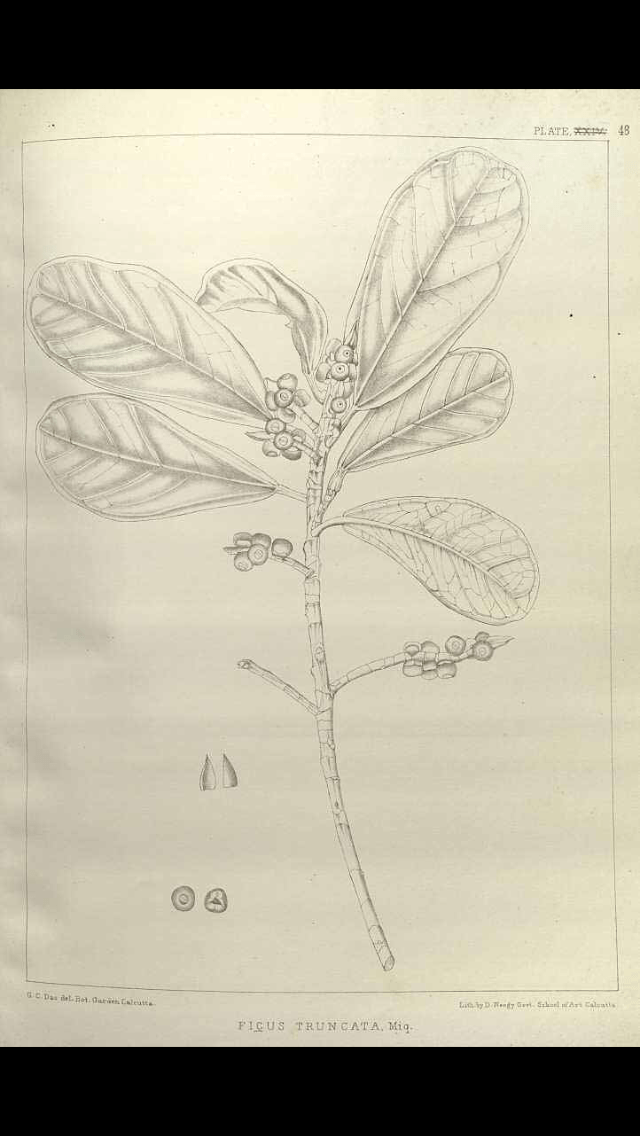 Anyhow, that’s that. Call ’em ficus microcarpa. End of the rant, I win).
Anyhow, that’s that. Call ’em ficus microcarpa. End of the rant, I win).
Back to ficus vs. ficus. Where was I? Oh yeah:
Two ficus walk into a bar, one asks for a martini, the other for a margarita. The bartender gives them both water, neat. “This ain’t what I wanted!” Says the one on the left, “me neither!” Says the other. The bartender just looks and wiggles his finger at them. He says “I ain’t dealing with your equal and opposite reactions to no booze, ya’ fig Newtons” Yuck yuck yuck.
Anyway…..sorry. These two ficus have been the poor subjects in an unscientific, purely anecdotal and poorly designed experiment that confirm my own biases but I will tout as irrefutable fact because, that’s how the internet works. My first challenge was air layering a ficus as opposed to just taking a big cutting (you should read the links above for the whole story). Both methods work, by the way, but I extrapolated that the bottom section would be more developed simply because there wasn’t an airlayer in the way.
This was the non air layered bottom. 
As for the tops, they both took. Here they are today.
 Those will be some sweet shohin one day. That’s my boot. I’ll need new ones soon. Size 9-1/2 wide or 10-1/2 regular. Waterproof please.
Those will be some sweet shohin one day. That’s my boot. I’ll need new ones soon. Size 9-1/2 wide or 10-1/2 regular. Waterproof please.
The tops and bottoms after separation.
 So what’s the dealio today? I’m just going to annoy some people who think that you need to let branches grow out to thicken them. I mean, that works but so does just developing a branch.
So what’s the dealio today? I’m just going to annoy some people who think that you need to let branches grow out to thicken them. I mean, that works but so does just developing a branch.
Let’s see…..this was the air layered bottom. I decided to do the long game on it. Let the branches and leader just grow.
Poor ugly tree, sorry. You need to be a bonsai. Soon, soon. 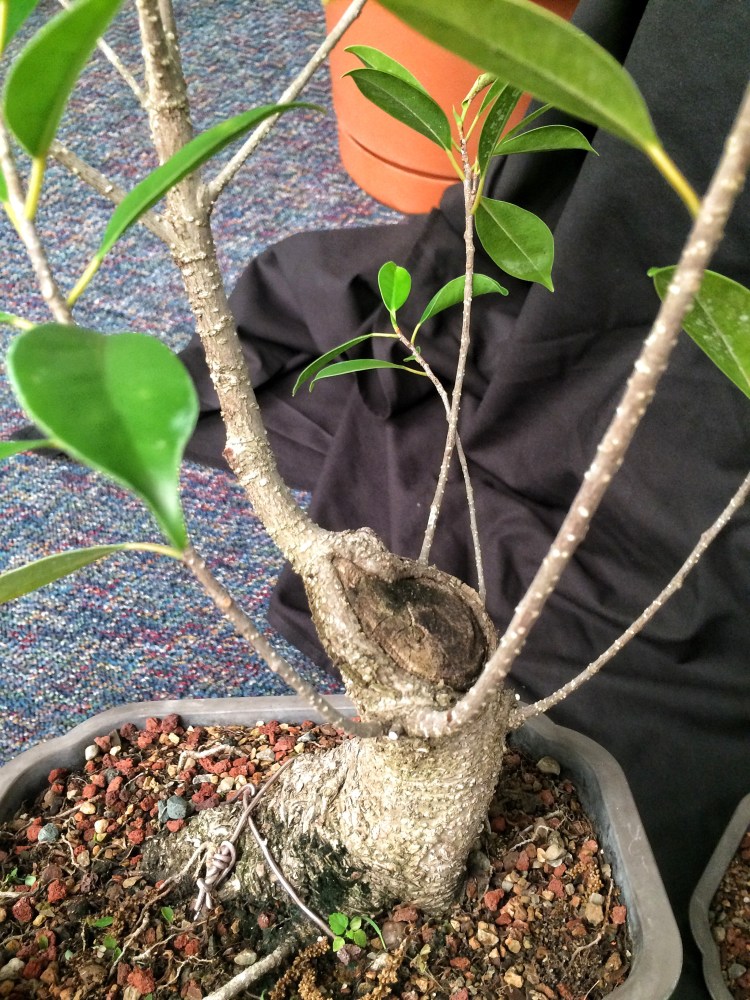
Now, the chopped one.
It’s a little more developed (that should be read in the sarcastic voice of say, David Letterman or John Stewart)

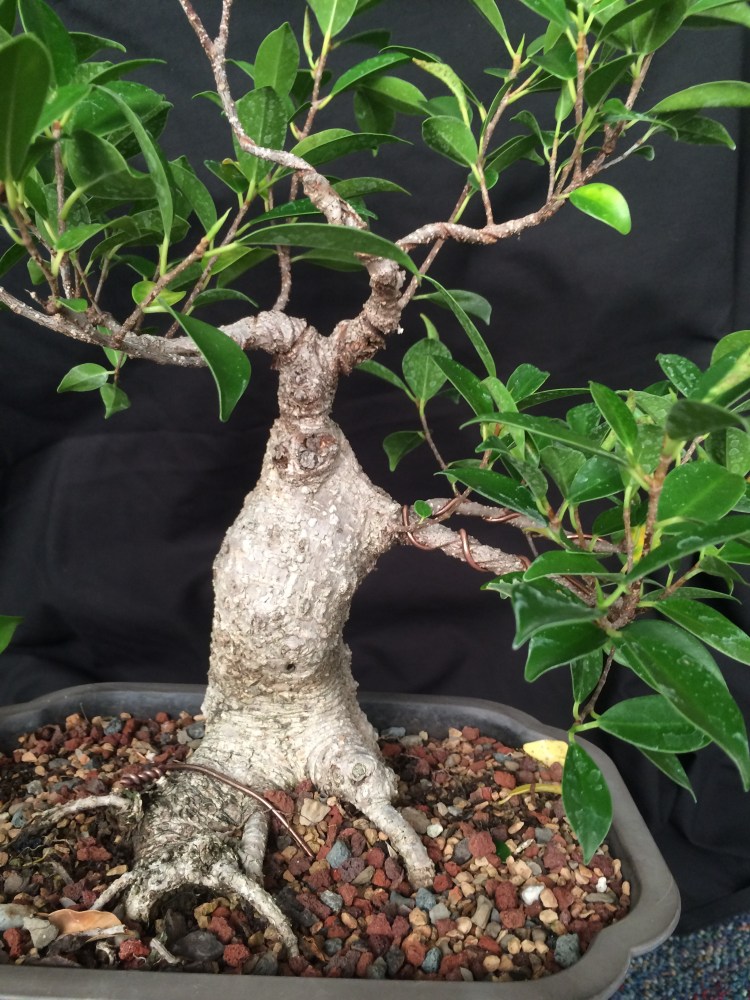
Back to the “let it grow” ficus.
Wiring the branches horizontally
Back to the other tree….it’ll get the normal developmental treatment.
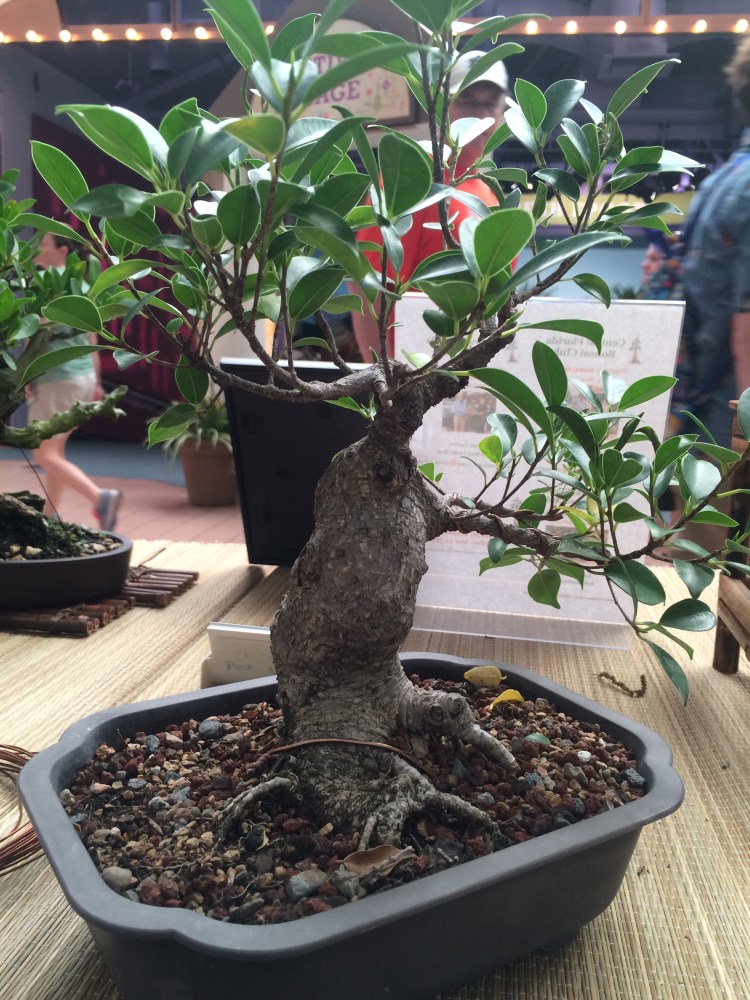
You’ll notice how thick the leader is compared to the “let it grow tree”.
Those are Alan’s ankles and white socks. 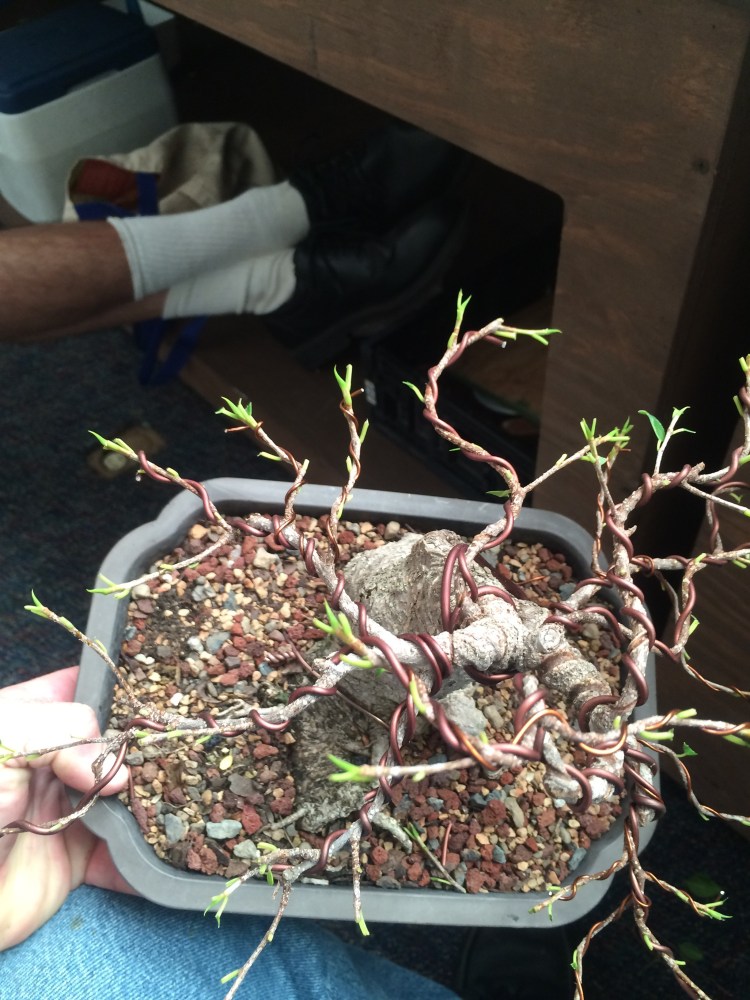
You know what? I feel sorry for the other tree, I think I’ll chop the leader to get some branching.
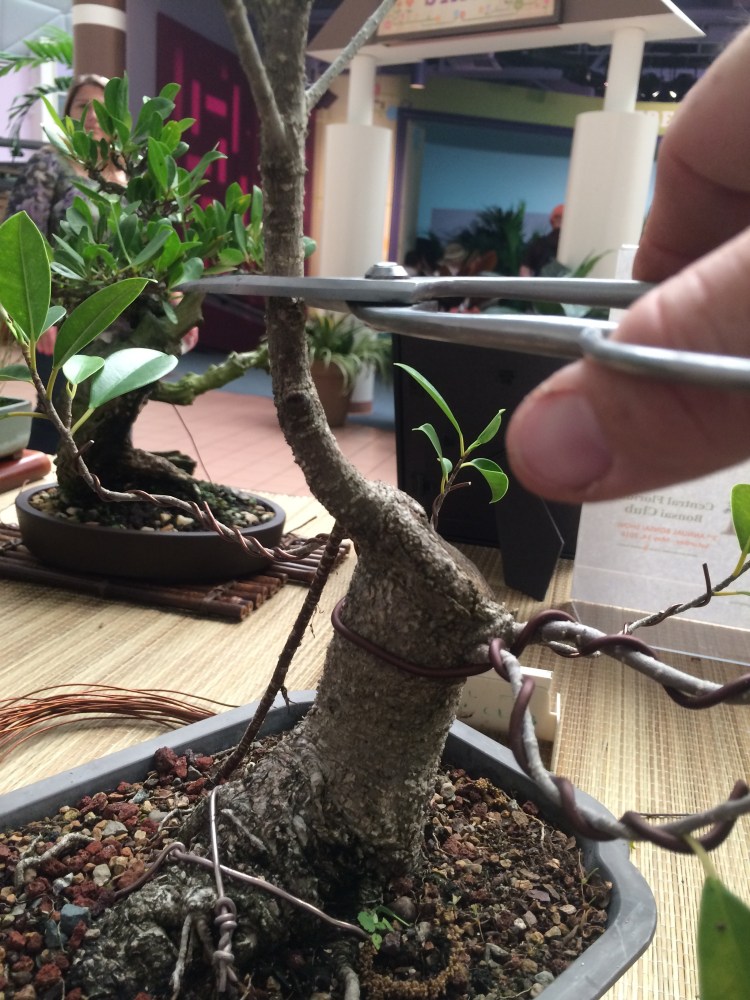

I’m thinking it needs to be a bonsai more sooner than later. 
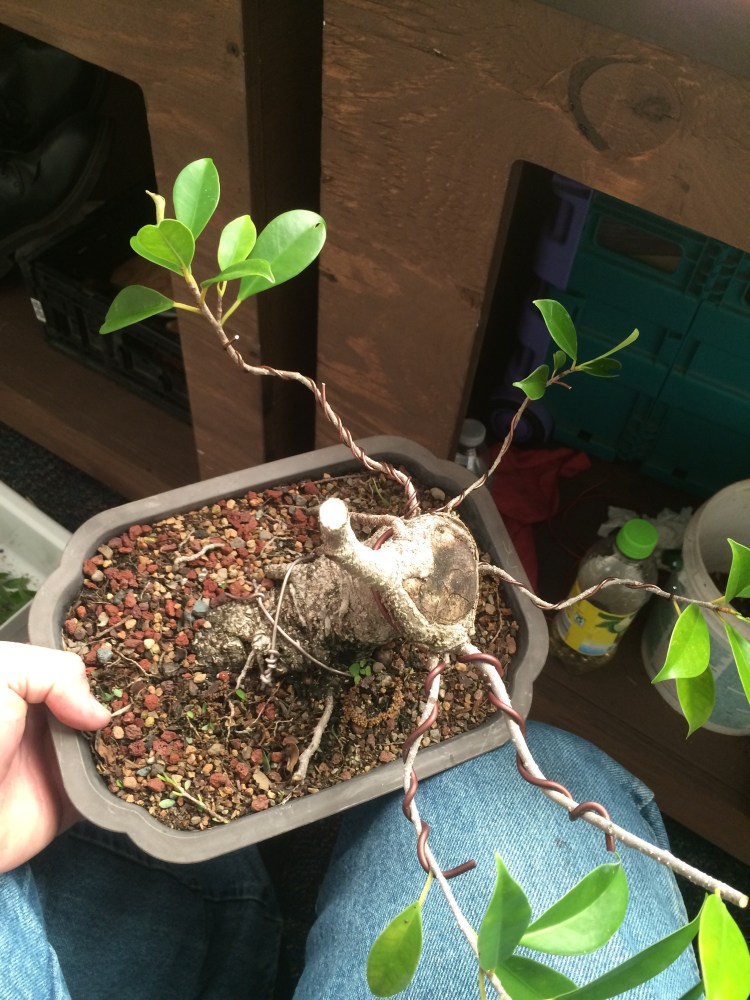
All this happened way back in April actually. Here are the trees today.
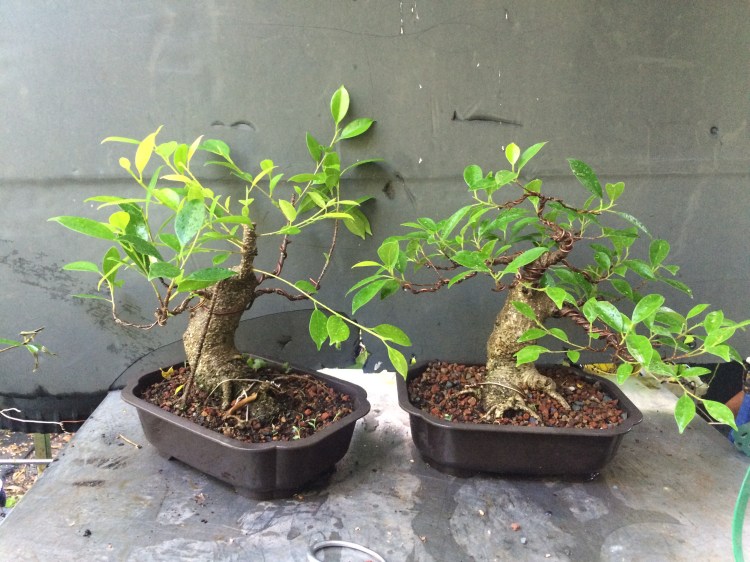
And how they should be potted with the correct fronts. 
Look at that. It’s growing! You’ll be a bonsai soon little ficus.
You’ll be a bonsai soon little ficus.
Considering I didn’t have a control, my sampling size was one (for each method) and I didn’t measure the water or the fertilizer, I think that this is conclusive proof that there’s more than one way to skin a cat.
Of course I know that there will be people mortally offended by this cavalier and irreverent post that’s going against the orthodoxy taught almost universally (read the byline up top, look up the word “iconoclast”) in bonsai workshops and books and YouTube videos throughout the world. But that’s my job sometimes, to ask the teacher “Why?”.
Why does it seem that one can use multiple bonsai techniques and still arrive at a similar end?
I’ll leave you with this sentence, in reply:
Horticulture is a science. The practice of horticulture is an art.
I’m tired, all that philosophy (or is it just sophistry?) is thirsty work.
Time for a beer.
 I think it’s time for some carving next.
I think it’s time for some carving next.
Cheers.

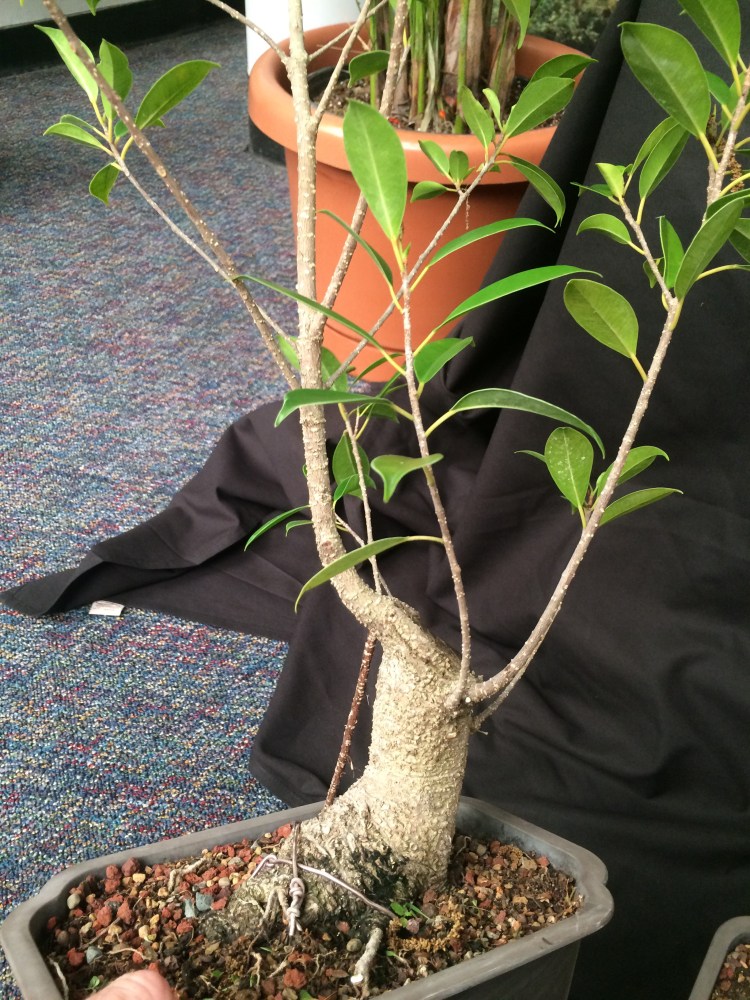
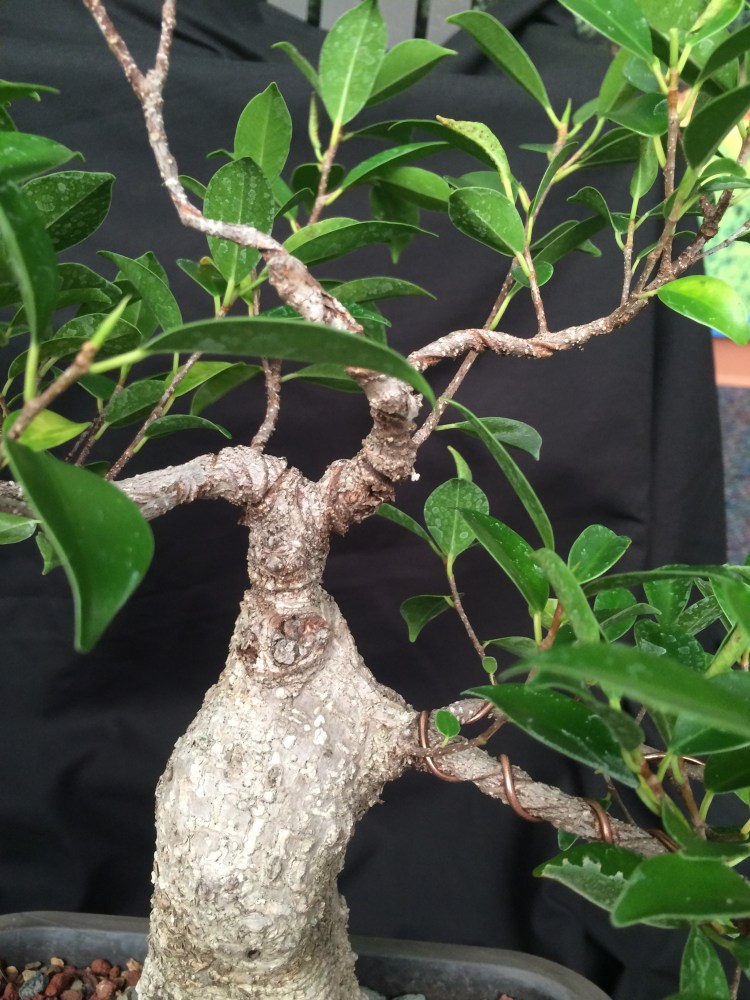
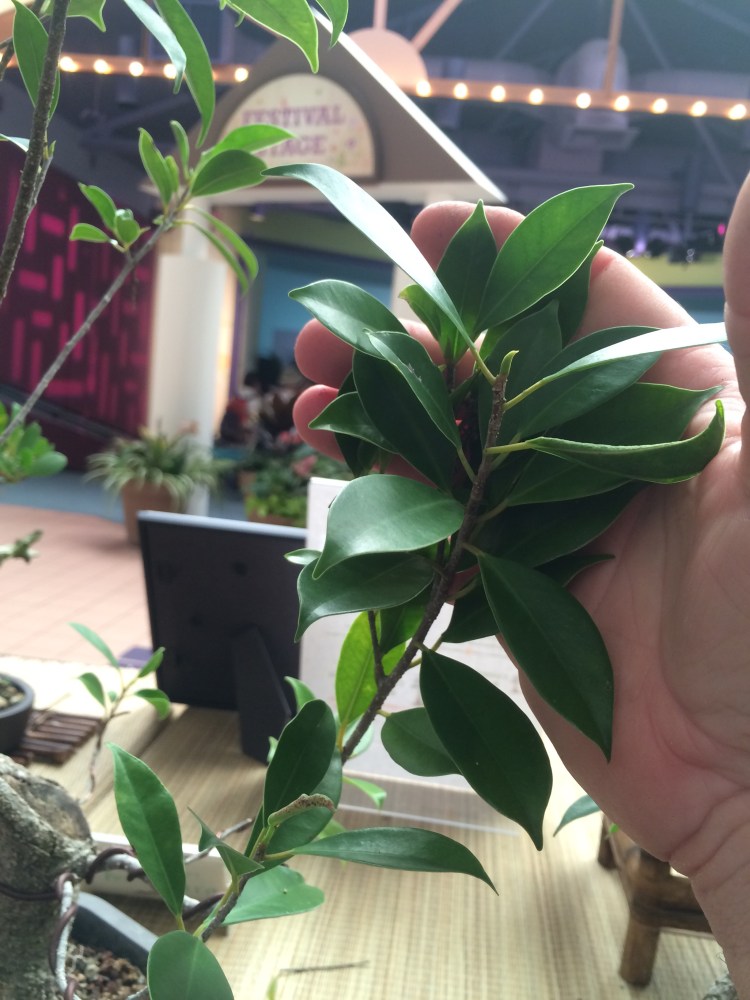
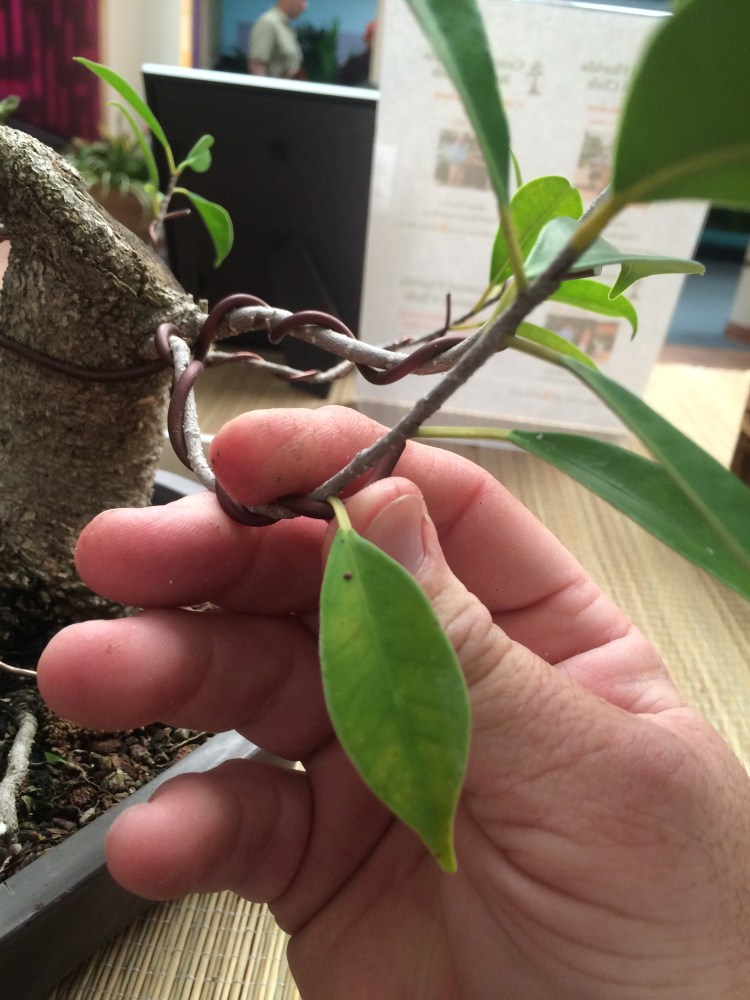
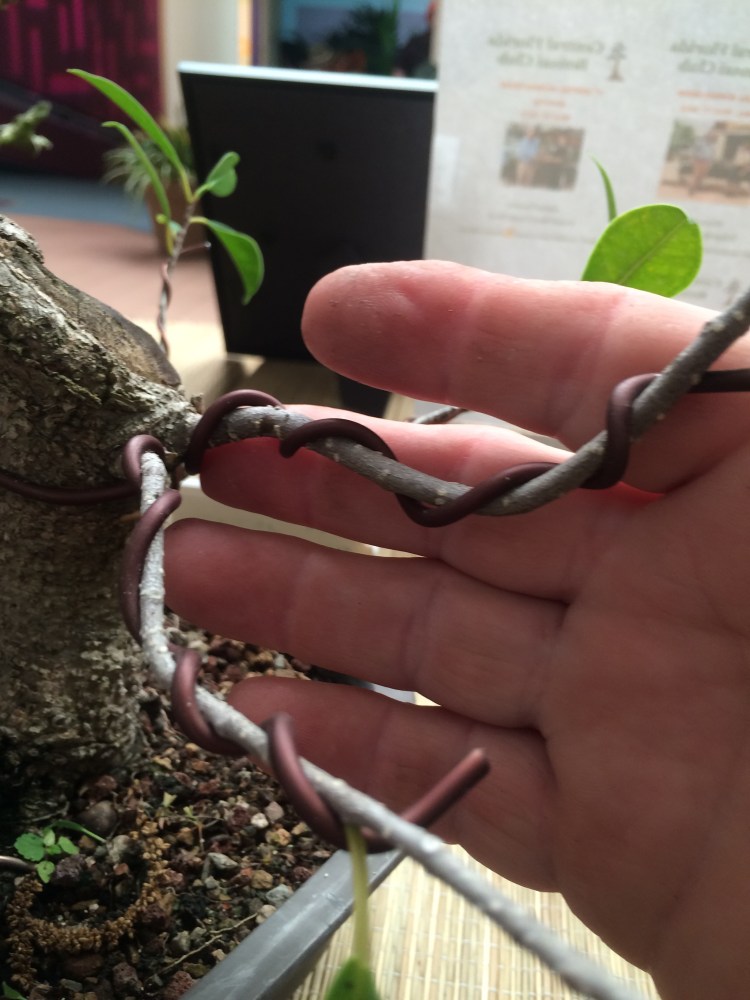
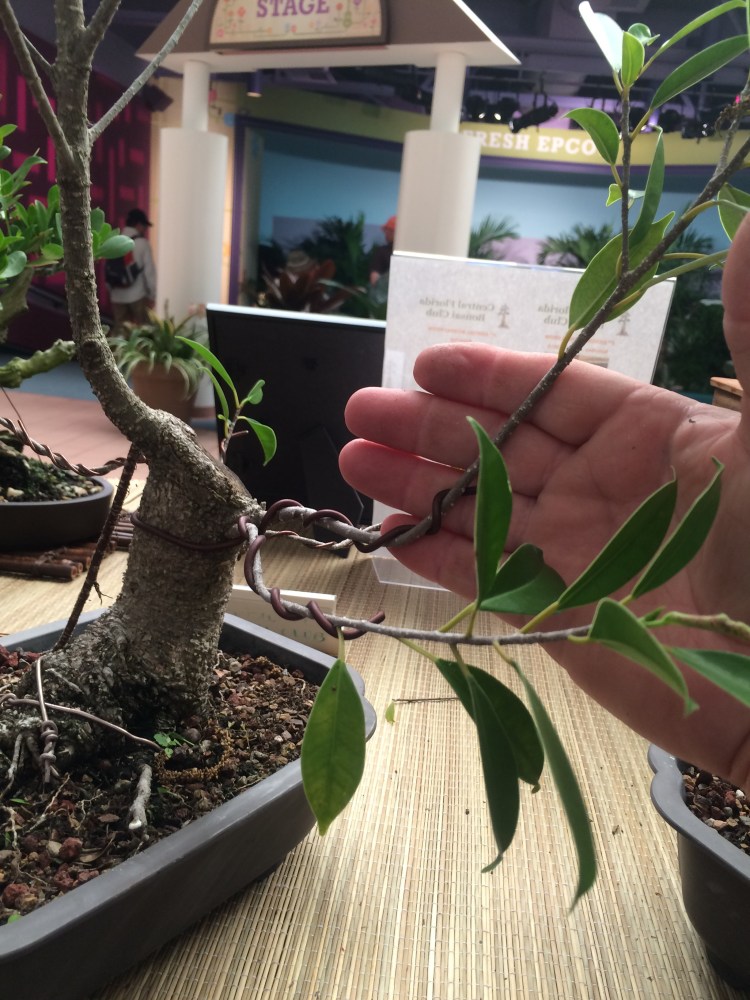

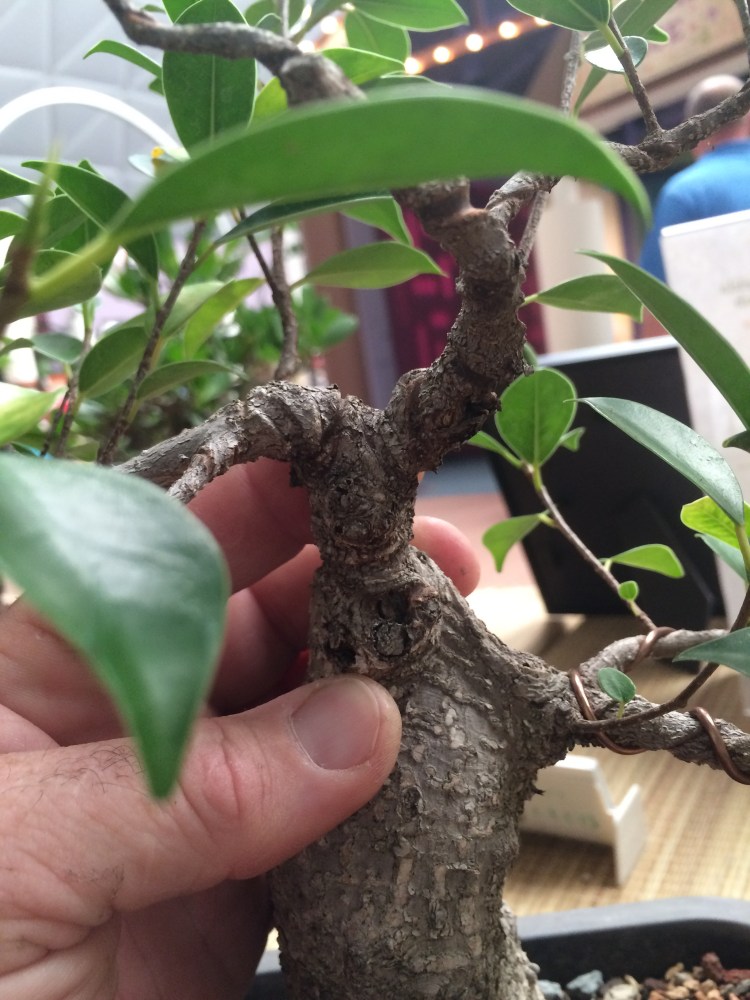

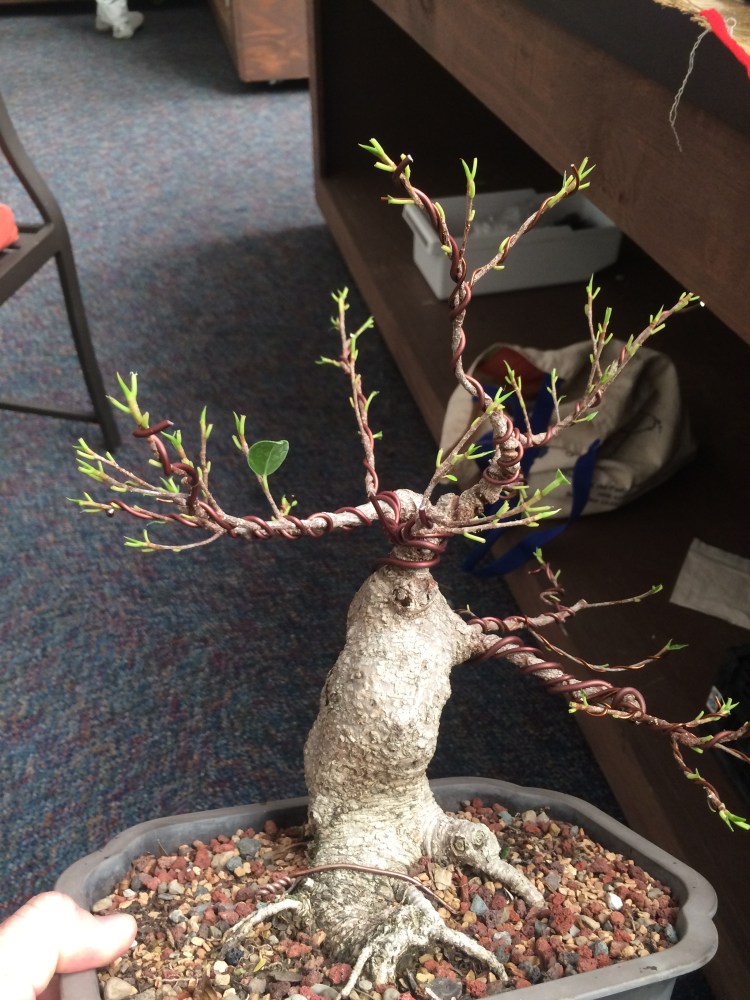

Great, i have noticed that as long as the branch has new growth or new branches it will thicken. Cheers from a ficus lover in LA calificus.
LikeLike
WHY YOU CALL BONSAI TO THIS PILE OF CRAP?
LikeLike
Hah! I actually don’t. I say they may be bonsai at some point.
My blog isn’t the mainstream bonsai blog where I pose next to near finished trees and tweak them to show off my greatness. I often work with material that needs work and time, to show what can be accomplished. There are times when the material is substandard but other times when it’s phenomenal.
If you can’t appreciate my type of blog, perhaps you shouldn’t read my posts.
Sorry for your wasted time my friend, maybe the next post is to your liking.
LikeLike
Wow, Guiliano seems a little tense. Love your blog Adam, funny, interesting, and entertaining. Please keep it up.
LikeLike
Don’t listen to this guy, your blog is great. I like that you show the sometimes ugly side of bonsai. I don’t want to see a beautiful completed tree, I want to see the where the tree started and watch you craft into a beautiful and completed tree. Keep doing what you’re doing cause it’s awesome.
LikeLike
Considering these techniques on a potulacaria Afra. Which one is better to build caliper?
LikeLike
To build trunk calliper you need to let it grow tall in a deep nursery container. On any tree really.
LikeLike
That is the kind of knowledge we, amateur bonsai enthousiasts appreciate because it is that type of subjects (trees) some people may call “pile of crap” that we often deal with and hardly know how we can transform them in acceptable bonsai. Adam keep on teaching us your art by taking the time to build those unique stories and experiences.
LikeLike
Reblogged this on Wolf's Birding and Bonsai Blog.
LikeLike
Have you found that chopping sacrifice branches like this is the best way to achieve healing on a large cut as well?
LikeLike
Any good growth near the cut will help heal the cut. You still have to be on top of it on ficus though, keeping it cleaned and free from rotted wood. Ficus won’t heal over it
LikeLike
Thanks for the post, you are inspiring me to ask some serious questions about Botanical names and meanings. I guess that’s why many of us prefer common names for plants.
LikeLike
Great stuff. Just for the record it’s Ficus macrophylla – phylla, phyllo = leaf. If your interested a good book for names is ‘THE NAMES OF PLANTS’ by David Gledhill. Gives the meaning of tons of latin names used in botany.
LikeLike